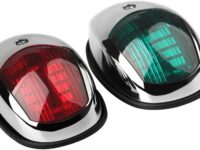What is a candlestick chart? 8 must know candlestick patterns

Data and its analysis play a major part in the stock market today and there are numerous methodologies used for analysing the performance of stocks. The candlestick chart is one such method. It is afinancial chart that shows the growth or decline of stocks to help you with your investment decision. Let’s take a deeper look at what a candlestick is and some of its most useful patterns.
What is a candlestick?
As said above, a candlestick is simply a charting method. A stock’s opening and closing prices and the highest and lowest prices of the day or session are marked in a candle-like graph.
The picture below is how a candlestick will look like:
Picture credits: Investopedia
As you can see in the above picture, the graph is candleshaped with an upper and lower shadow. The upper shadow is sometimes interpreted as the candle’s wick as well.
The wick’s top is the highest point of the day while the lower shadow’s bottom is the lowest. In the candle, the start and end of the candle body show the opening or closing price of the day depending on whether the stock has made a profit or loss that day.
For instance, if it’s a day where the stock has gained, the start of the candle’s body will be the closing price and the bottom will be the opening price. In a day where the stock has declined, it’s viceversa.
8 important candlestick patterns
Candlestick patterns are used in trading to analyse and determine what stocks to buy and how a company is performing in the stock market today. Following are the eight patterns to look out for:
Long-day candle
This candle represents a day where there is a major difference between the opening and closing price. As a result of this, the candle body will be longer than normal. The wicks could be longer or shorter, according to the day’s performance.
Short-day candle
Contrary to a long-day candle, a short-day candle represents a day where the stock’s opening and closing prices didn’t have much difference. Because of that, the candle’s body will be shorter than usual.
Marubozu
Marubozu means bald in Japanese and that’s exactly how a marabozu candle looks like. It has no upper or lower shadows, representing either a bearish or a bullish day.In the case of a bullish marubozu (green candle), the bulls of the market didn’t let the stock have a lower shadow. In a bearish marubozu (red candle), the highest price is the opening price and the stock only went downwards that day.
Doji
In a doji, the candlestick becomes a cross-like structure with no candle-body created. It shows extreme confusion in the market and the opening and closing prices will be equal.
Spinning top
A spinning top is similar to doji in its characteristics. It means that the market is indecisive and neither the bull nor the bear could dominate the stock. Unlike doji, the opening and closing prices of the stock will bedifferent and hence, the slight candle-body formation.
Hammer and inversed hammer
A hammer candlestick has a long wick or lower shadow and a short candle body. According to the colour of the hammer, it can indicate strong market tendencies. A green hammer indicates a strong bullish tendency while an inverted and red hammer indicates a bearish run.
Conclusion
Studying candlesticks is a great way to analyse the stocks to buy. This financial chart helps get a snapshot of the price movements of a stock. Though this method has been around for years, candlesticks patterns are still used in stock markets today to help investors analyse securities effectively.









